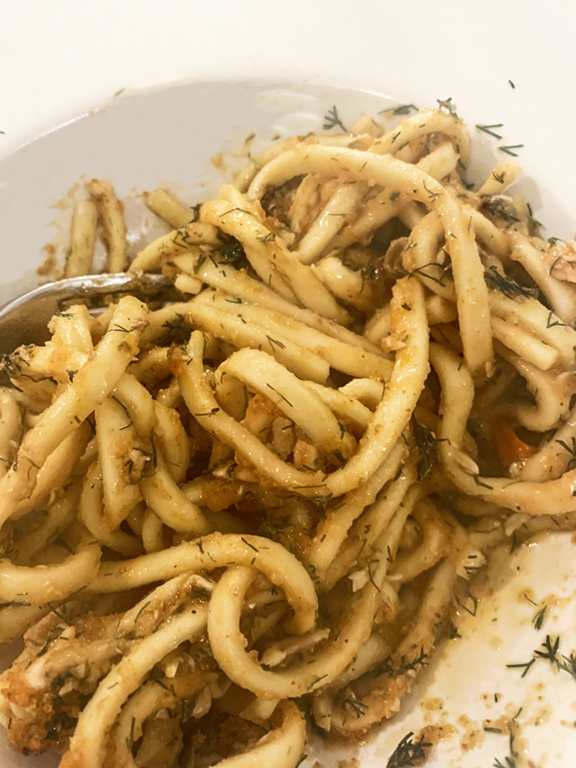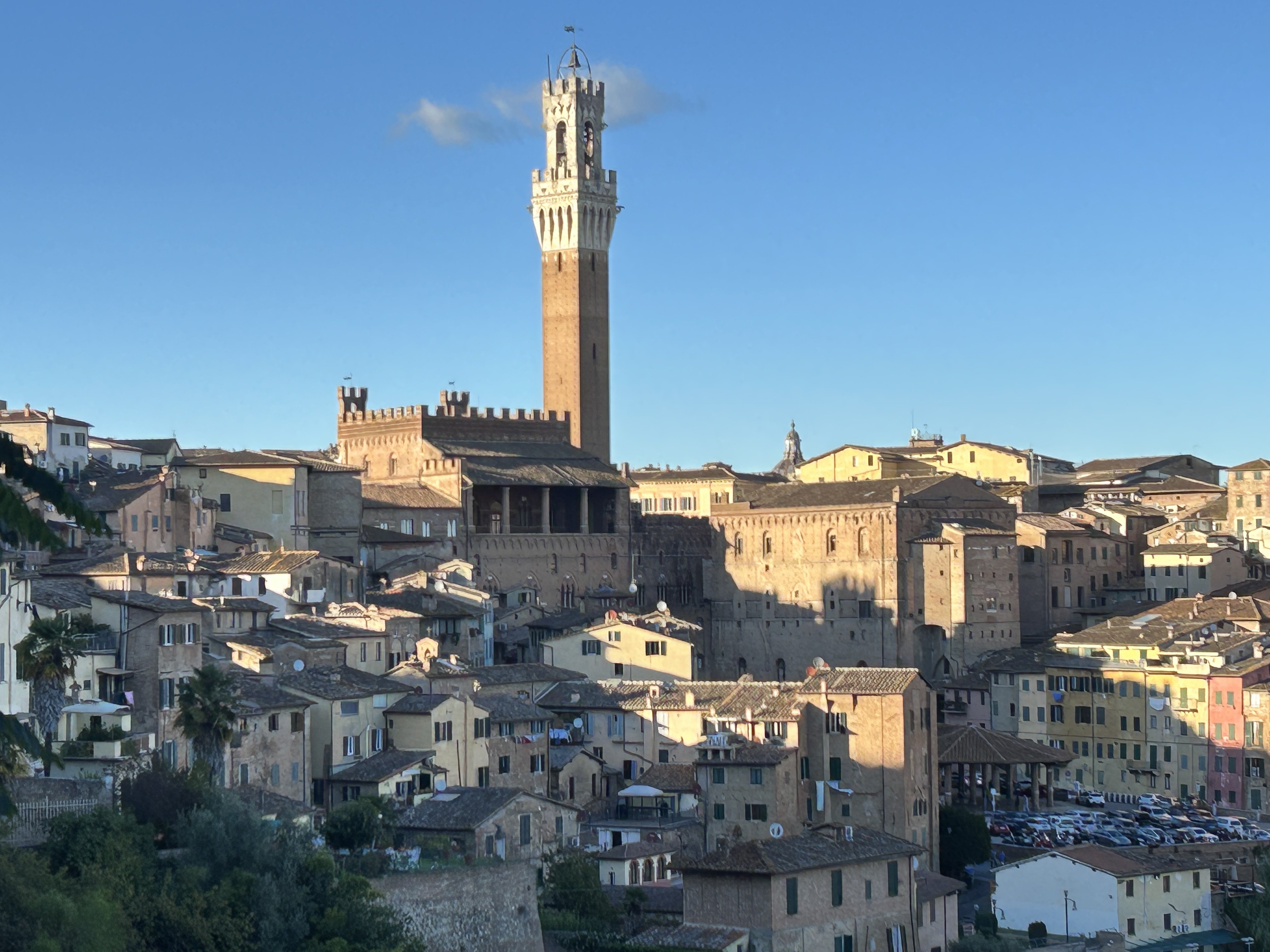This second installment of our trip to Sicily
focuses on its gastronomy: While we were in Palermo, we decided to
explore the various markets, starting with the Mercato Del Capo which proved to
have many choices in the way of typical Sicilian delicacies. The Palermo
markets have been credited with being the place where street food originated.
While take away squid and various fried local food were fantastic choices, we
wanted a place to sit down for a while.
Fried pizzette, fritelle with
fish and herbs
Fried bread and fried potato balls
We settled on a place that seemed to be very
local -Trattoria Mariucciu. The restaurant had outdoor seating right around the
corner from the main market street and one man who, took our orders, cooked our
food and served us. We had a quiet lunch of typical Sicilian dishes, surrounded
by local Palermitani.
Grilled eggplant, sun dried tomatoes, tuna
salad and caponata (a cooked Sicilian mix of vegetables with a base of eggplant).
As we explored the city we came to
understand that there were recurring elements in the cooking of the area.
A staple of many Italian summer meals is the
caprese salad which although supposed to have originated on the Isle of Capri,
has permeated the whole Italian peninsula
At the restaurant La Galleria, near the
Palermo Cathedral we in fact tried the caprese salad.
Sliced tomatoes, sliced mozzarella, fresh
basil, drizzled extra virgin olive oil, and salt and pepper. If you wish you
can drizzle some aged balsamic vinegar to add to the flavor.
This was followed by some of the freshest seafood that you will
ever taste.
We opted for the Zuppa di Pesce (seafood
soup). This, we should say, has as many interpretations as cooks, but we can
tell you that the base is usually tomato, garlic spices and herbs. The fish
included is whatever is fresh, in our case mussels, clams, shrimp small white
fish and squid.
We also tried a seafood salad which was a
wonder to behold...
...and a whole fish cooked in a tomato, caper
and olive sauce.
As we moved on to the eastern Coast of
Sicily, we found ourselves in Catania,
Siracusa, Ragusa where we were introduced to wonderful flavors that have found
their way into the Sicilian cusine.
I will not name all of the restaurants that
we visited but will show a few of the incredible dishes that we sampled.
Although we are probably all familiar with pesto
sauce, usually Pesto alla Genovese which traditionally consists of crushed
garlic, European pine nuts, coarse salt, basil leaves, and grated hard cheese,
we sampled pesto with a twist. In our version, Busiate - a twisty long pasta -
was coated with a traditional pesto with clams added.
We later tried a traditional pesto ‘alla
Trapanese’, originating in Trapani, which included almonds instead of pine
nuts, garlic, basil, tomatoes, olive oil and salt and pepper. The resulting
dish was an excellent mix of herby, oily, salty, nutty, tomato sauce covered
pasta that I am still trying to replicate.
While you are in Siracusa be sure to stop in
to the market where you can experience the local street food of fresh oysters and champagne or you can stop
in to one of the little seafood bars and sample some of the appetizers as we
did. Here you can see a plate of local marinated anchovies, a salad of
anchovies, oranges and fresh fennel, and slices of octopus loaf with pistachios
and lemon juice.
As we ended our trip in Catania, we couldn’t
leave without having what seems to be the symbol of the ‘cucina Catanese’ – Pasta Alla Norma. The origins of the dish
is attributed to the city of Catania and is named, in a fashion, after Norma, a
character in an opera by Vincenzo Bellini.
There are two versions of the story, the
first, a Sicilian writer, Nino Martoglio exclaimed, ‘This is a real Norma!’ - meaning
a masterpiece - when he tasted the dish.
Another story declares that the dish was
made for the opening night of the opera, Norma.
Regardless of the origins, the dish has
remained a favorite throughout Sicily and has found its way in to my kitchen as
well.
Bringing our tour of Sicily to a close, I
have to say something about the desserts.
We were able to sample the characteristic
hand-made chocolate of Modica which we found to be rich and different from any
other chocolate we have ever tried. It is ground by hand and has a peculiar
grainy texture and aromatic flavor.
We also tried cannoli that were as big as
your hand in some cases and Babà al Rum
both with and without whipped cream filling. In the town of Aci Reale we
discovered that the specialty there is Babà with granita (Italian ice). All
versions were exceptional!
And last but not least, should you find
yourself in Sicily, you cannot leave without trying a Sicilian Cassata cake.
The Filling is made of sweetened ricotta usually filled with candied fruit and or
chocolate chips. It is glazed with an amazingly sweet icing and is highly
decorated in most cases.
If I had to describe the flavors of Sicily I
would have to say that the food reflects the area in a way that is flavorful
and memorable. Fresh seafood, local
vegetables and fruits, spices and herbs that give a hint of the people who once
occupied the island as well as the land itself.



















